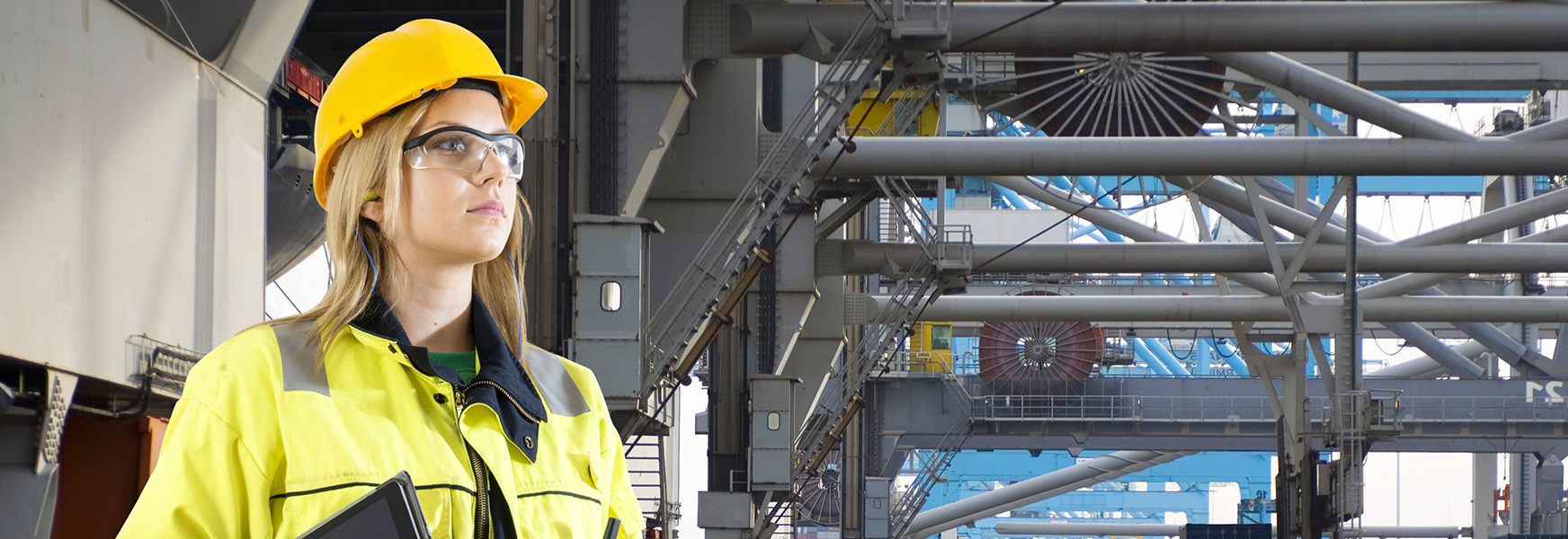Take a Closer Look at Safety Glasses

Safety glasses are beautiful things. Functional, comfortable, light, cheap, and they can save your eyesight. Hard to beat the return-on-investment represented in a pair of safety glasses that cost only a few dollars. So let’s look closer at how they can be so effective and why they don’t always work.
Safety glasses are part of a worker’s personal protective equipment (PPE). As such, they should be the last item applied in the hierarchy of safety controls. We covered the hierarchy in-depth in a past post, but the basics are that we should first eliminate the hazard whenever possible. If elimination is not possible, then further address it with engineering controls like dust collection or machine guarding. Then move on to administrative controls such as training and procedures. Lastly, when the hazard remains, we should don the proper PPE.
Remember, PPE is the last line of defense. It is the last measure we take to protect workers. Too often organizations use PPE as the first measure because it’s easy to implement. But simply handing someone a pair of safety glasses is basically saying, “Good luck, we know things will be flying at your eyes but these will probably work.” So before resorting to PPE, first evaluate your operations and determine what controls can be implemented.
When it’s determined that safety glasses are required, then comes the selection of the right glasses. First, make sure the glasses are properly rated for the exposure. ANSI rated glasses will have the Z87 marking indicating they are approved safety glasses. Impact rated glasses will have the + sign as well. Although seemingly made from light weight plastic, a pair of Z87+ glasses will stop a ¼” steel ball travelling at 150’ per second. These are impressive products of engineering and not simply a pair of glasses. Your favorite sun glasses just won’t stand up to such an impact.
Many workers will wear their normal prescription glasses, attach a pair of side shields, and think they are compliant with the OSHA standards and best practices. This could be true, but only if those glasses are embossed with Z87. Both the lenses and the frames have to be designed as PPE in order to have the Z87 marking. Many standard eye glasses are “impact resistant,” but they are not safety glasses. If you’re willing to bet your eyesight on a pair of glasses make sure they are designed to protect those baby blues.
Also remember that we have to protect our eyes from many hazards, not just flying objects. Working with chemicals or around dusts would require specifically rated protection. D rated glasses protect against splash, dust, and fine dust (D3, D4, and D5 respectively). Other special use glasses would include welding shades (W), infrared filters (R), and ultraviolet protection (U).
Millions of us do wear prescription glasses, and if they are not Z87 rated then how do we protect our eyes? There are three basic choices: wear goggles or over-spec eye protection, use “cheater” safety glasses, or buy prescription safety glasses.
The first two choices are very common and affordable. Wearing safety glasses over prescription glasses won’t make any fashion statements, but it is effective. Bifocal inserts (cheaters) add only a buck or two to the safety glass price and work for those who need them for reading or other close-up work. The inserts can be found in the lower portion of the lens for reading or the top of the lens for overhead work.
But for those who need glasses for multiple corrections, the best choice will be prescription safety glasses. OSHA requires employers to pay for required PPE with two major exceptions. Prescription safety glasses is one of those exceptions. But ultimately the product is far superior to using cheaters and far more practical than over-spec glasses. The key to effectiveness is ease of use. If they are made with your prescription you’re much more likely to wear them.
Speaking of which, there is one very important fact related to safety glass effectiveness. They will fail to protect your eyes 100% of the time when worn on the forehead or hung around the neck. Organizations must ensure that all employees who should wear safety glasses are wearing safety glasses. Eyesight is a gift and it can be taken away in an instant. One can recover quickly from a multitude of injuries, but losing an eye will have impact for a lifetime. At only a few dollars per pair, tinted or clear lenses, multiple styles, anti-fog coatings, and a real peace of mind, it just makes sense to don those glasses properly and leave them on whenever a hazard is present or could be present.
For more information on PPE or any other safety topic check out our resources at MEMIC.com.

